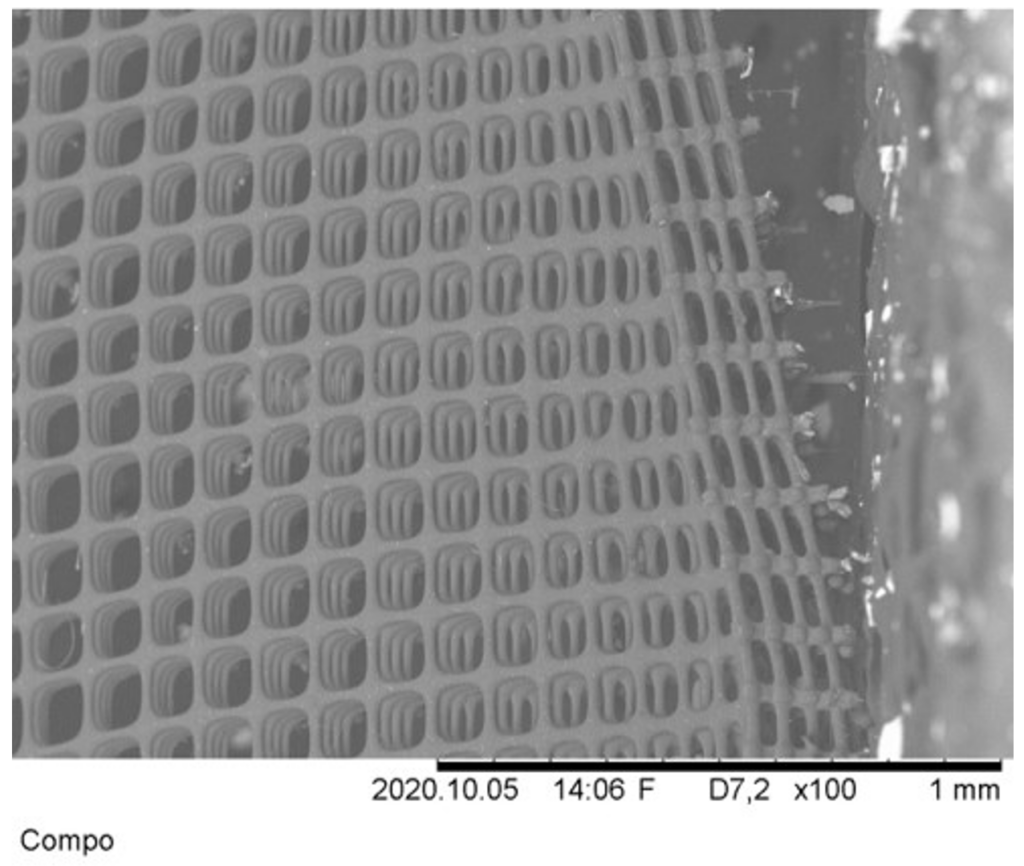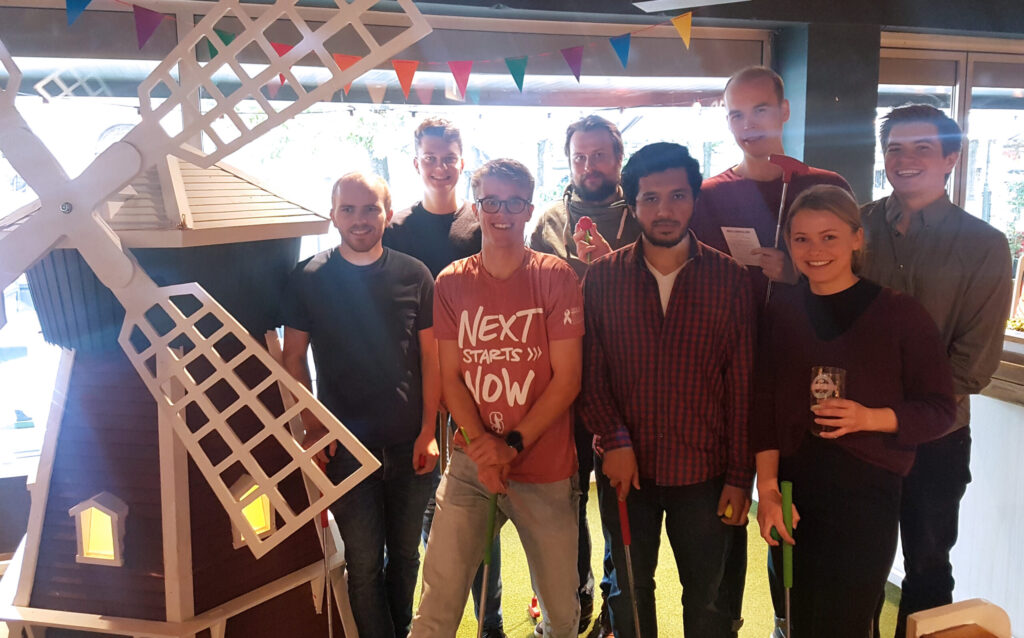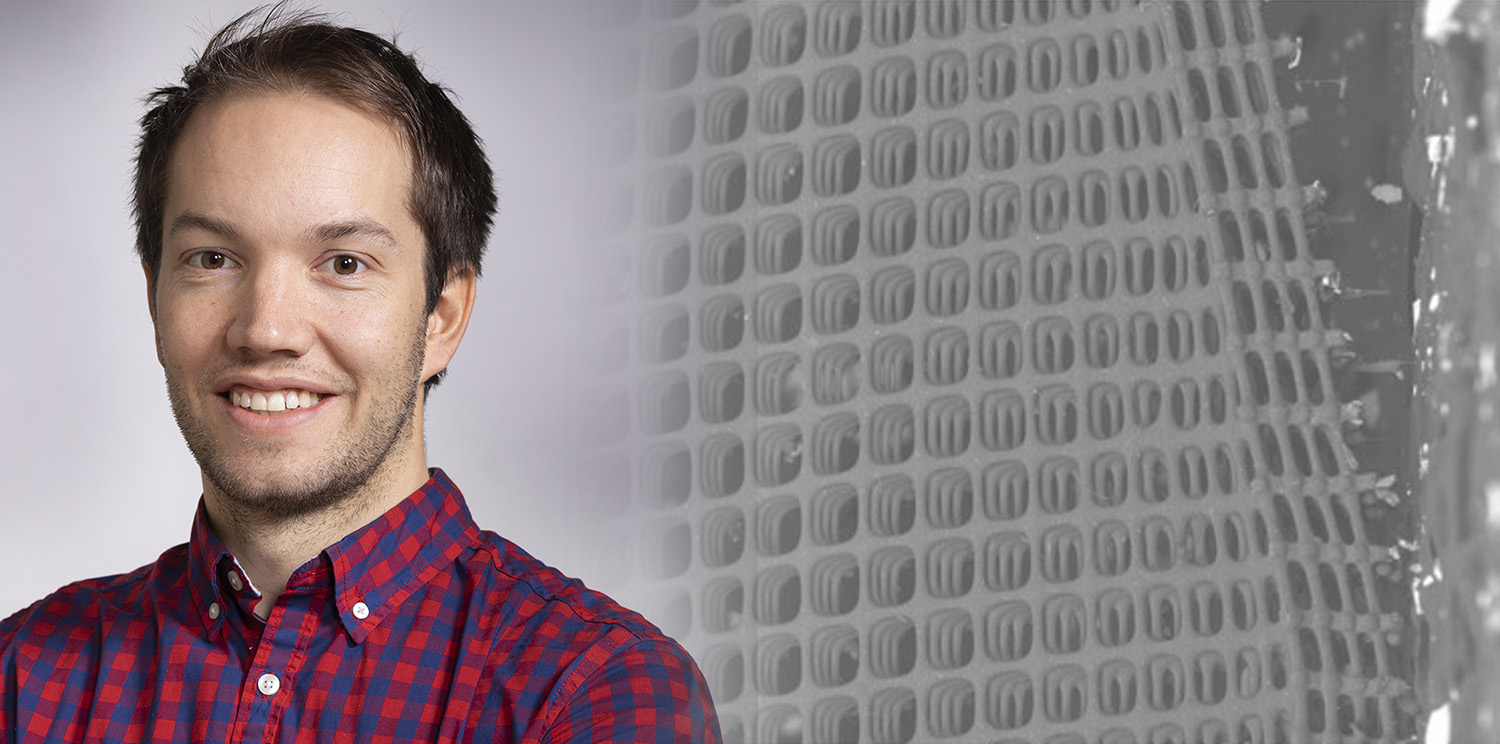Your ELECTRODE project won an ERC grant of EUR 1.5 million (NOK 16 million). What is the project’s aim?
Responding to a spike in demand for energy with fossil fuels means firing up another power station. But renewable energy generation isn’t this flexible, so we need better ways to store energy to match up supply and demand.
We’re working on fuel-cells, electrolysers, and flow-batteries that could help solve this problem. In these devices a fuel needs to be distributed over a catalyst layer to convert its chemical energy to electrical energy for storage, and vice versa.
The grant is about studying how fuel is distributed through the device and what energy is lost on its journey – the so-called mass-transport limitation – and how to minimise those losses. We are proposing that we employ a new technique based on 3D-printed conductive microstructures.
What is different about this technique?
We create a process, where ordered structures of chemically stable and conductive material is created directly from a computer model. This hasn’t been possible before on the scales required to fabricate a fuel-cell. Until now, we could not find the optimum design for an electrode of a fuel-cell because it could not be produced. We want to design a transport mechanism on the computer and transfer it into a physical prototype.
Your previous work on biological implants seems far removed from energy storage. Is there a common thread?
That came from the high-resolution aspect of our 3D printer. It can mimic the extracellular matrix – the scaffold that surrounds cells in our tissues – in many ways. Like an electrochemical device, a tissue engineering scaffold requires optimisation of the flow of a liquid. In tissues, that’s bodily fluids carrying nutrients.
Our 3D-printing platform is a toolbox that can span over these length scales. I think we have a range of possibilities that no one else has.
How did you come up with the idea to apply that toolbox to energy storage?
During my time at the Nanoscale Prototyping Lab at Stanford, the idea of creating conducting structures for electronic devices using this 3D-printing technique had floated around for many years.
When I came to NTNU it came up again because Dr Robert Bock from the Department of Energy and Process Engineering was trying to find someone who could produce ordered structures for use in fuel cells, and he found me.
We came up with this joint project. It was a side project over the years, but now it’s really something that we can put our focus on.
Who else are you collaborating with?
Dr Bock and his colleagues Prof Odne Burheim and Prof Bruno Pollet provide the necessary background in thermodynamic modelling and testing of fuel-cell concepts. In addition, Prof Filippo Berto is helping me on issues of structural integrity, which is relevant to the extremely fragile structures we are producing.
I am also relying heavily on the expertise of Per Erik Vullum at the Norwegian Centre for Transmission Electron Microscopy (NORTEM). With the equipment available at NTNU, he is able to create the highest quality TEM images (including chemical characterisation) that I have ever had access to. Even Stanford, who we are also working with, sends their samples to NTNU now. Having access to NTNU NanoLab, where we do a lot of our nanoscale fabrication and characterisation work, has also been really important. As far as academic facilities go, it’s probably one of the best general-purpose cleanroom facilities that you’ll find in Europe.
What do you most enjoy about your work at NTNU?
Without my group I couldn’t do anything. As a professor you’re surrounded by young people that are curious and want to do something. They are thinking fast. They’re learning fast. It’s a thrilling environment.
Our research right now is exciting. You basically turn one knob, and there are five thousand other things to explore. Unfortunately the day is only 24 hours because there’s really so many things going on that I would like to investigate further.
Is there anything else people should know about Trondheim?
It’s so family friendly. The kindergartens are good and just around the corner. Also it’s really convenient to get to the university. That means you have more time to work and less stress in traffic. In terms of private life, Trondheim couldn’t be much better.
What motivates you at the moment?
We are almost at the closing years where we can really make a difference to the climate crisis. We have to transition to clean energy. I’ve seen this need more clearly with the birth of my daughter.
Solving this problem comes down to a change in politics, but I think politics will have it much easier when the technological improvements are really attractive.
Take Tesla. They did not create a very efficient car or economical car, they created a nice car that is very fast. People don’t want something that is average. I want to create a performance device that is so attractive that people will switch because it’s nice, and not because one should switch.
One also has to be pragmatic. When there is a performance and cost benefit, moving to clean energy is easier and more justifiable. I hope our research will have an impact in solving the climate crisis technologically.



